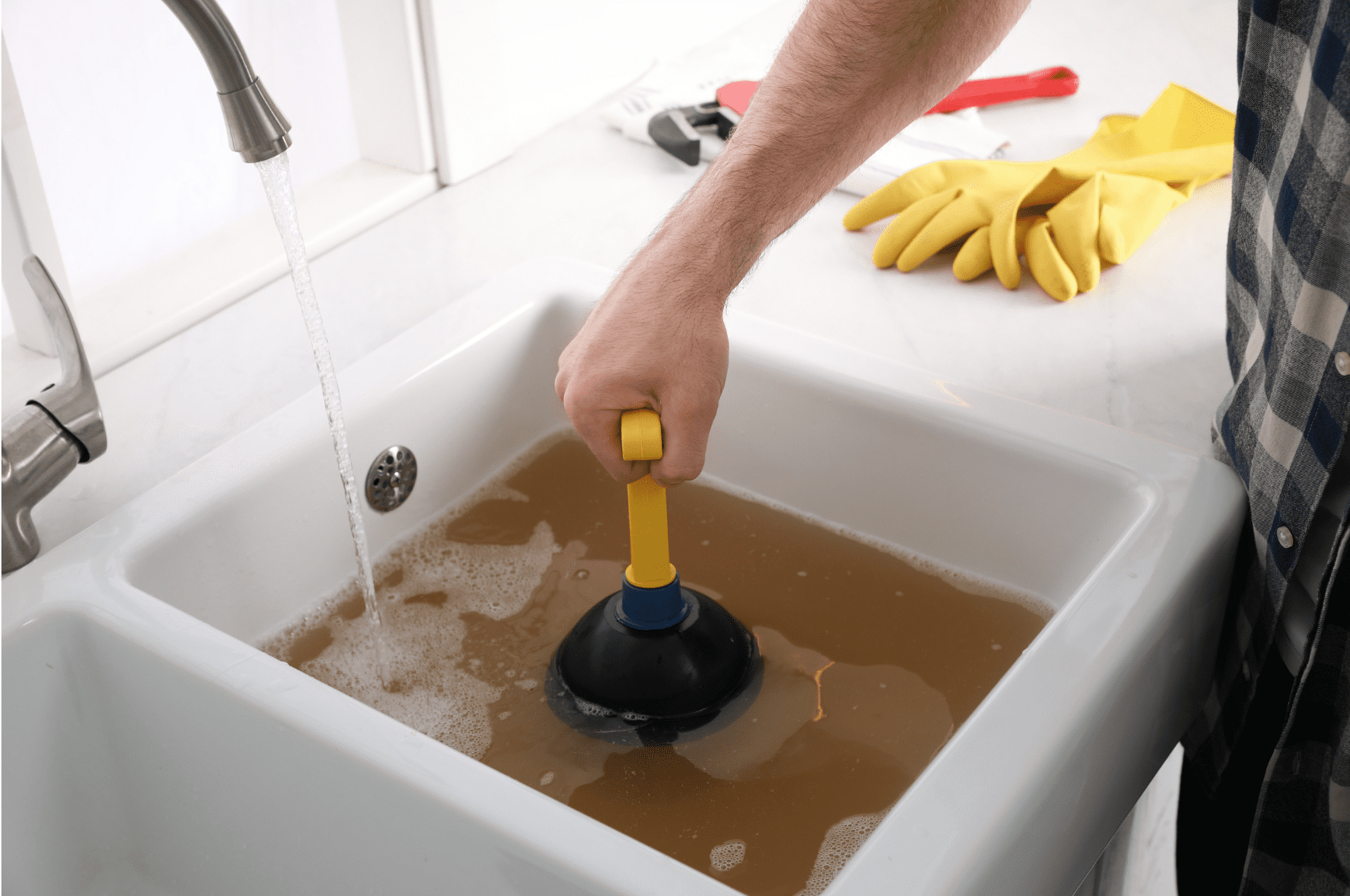We’ve all been there – a clogged drain causing a mini heart attack. The immediate reaction? Grabbing that Drano from under the sink, right?
But wait, what if you have a septic tank? Is Drano really safe for it? Contradictory views abound, and it’s easy to feel stuck. But don’t worry, this blog is here to unclog the confusion.
We’ll dive into how Drano might play with your septic system, and explore some safe alternatives. Ready? Let’s plunge in!
The Potential Impact of Drano on Septic Systems
How Drano Works and Why It’s a Problem
You’ve probably heard of Drano. It’s a big-time drain cleaner. It uses a mix of chemicals, like sodium hydroxide and aluminum, to heat up and bust those stubborn clogs in your drains.
But this powerful mix can spell trouble for your septic system.
Think of your septic system as a big, underground water treatment plant. All your household waste water ends up there.
Solids sink to the bottom and get broken down by bacteria. Fats and oils float to the top, creating a layer of scum.
The water in the middle, the effluent, leaves the tank and is cleaned further by the soil before it rejoins the groundwater.
When you use Drano, it doesn’t just clear the clog. It might end up in your septic tank, interfering with this crucial process.
Why Your Septic System’s Bacteria Don’t Like Drano
You might be thinking, “Well, Drano is good at breaking things down, right?” Sure, for clogs.
But it’s not so friendly to the bacteria in your septic system. These little guys are essential for breaking down waste.
Here’s the kicker. The chemicals in Drano, while good at clearing clogs, can harm these helpful bacteria.
Fewer bacteria mean your tank might struggle to break down and separate solid waste as it should.
Over time, this could lead to solid waste building up. You might end up with clogs, backups, or even damage that costs a pretty penny to fix.
Is There Proof that Drano Is Not Good for Your Septic Tank

0.4 ounces of Drano is enough to wipeout the
https://scholarworks.uark.edu/awrctr/81
bacteria in a 1000-gallon tank
Yes, there’s at least one credible study. The University of Arkansas put some household chemicals to the test, Drano included.
They wanted to know just how much of these chemicals could wipe out bacteria in septic tanks.
They ran two types of tests. The lab tests helped them figure out how concentrated the chemicals needed to be to get rid of the bacteria.
Then, they took things to the field, where they checked out the real-world effects of these chemicals on bacteria populations, and how long it took for these bacteria to recover.
Turns out, a bit of Drano can go a long way. To be precise, about 0.4 ounces of Drano in a 1000-gallon tank (that’s a concentration of 3.0 mg/l) is enough to wipeout the bacteria in the tank.
The study also concluded that the bacteria “recovers to its original concentration within 48 hours following the addition of the Drano.”
Now, here’s a twist: the usual recommended amount of Drano to unclog a drain is 16 oz. That’s a whopping 40 times higher than what the study used!
We don’t know what that amount may do to your tank, but it can’t be good.
Interestingly, the folks over at S.C. JOHNSON & SON,INC, the company that makes Drano, assure us that all their Drano products are septic safe.
They insist that Drano won’t mess with the bacterial action in septic systems. Quite the contrasting views, wouldn’t you say?
Thinking of Using Drano? Consider These Alternatives First
Old-School Tricks: Natural Home Remedies
There’s no need to reach for the chemicals right away. Let’s take it back to basics with some simple, safe, and natural remedies to unclog drains.
Ever heard of the baking soda and vinegar trick? Here’s how it works: Pour half a cup of baking soda into the drain. Follow it up with the same amount of vinegar.
Cover the drain and wait around 20-30 minutes. Then, rinse with boiling water. This safe, non-disruptive mix can do wonders for minor clogs.
Don’t forget about the good old plunger, either. The suction can be surprisingly effective at dislodging clogs and getting that water flowing again.
Playing Defense: Preventive Measures to Avoid Clogs
The best way to handle clogs? Don’t get them in the first place. Be mindful of what goes down your drains.
Grease, oil, coffee grounds, fibrous materials like vegetable peelings, and non-degradable items like diapers or wipes are no-nos. Efficient water use can also go a long way.
Spread out your water use to avoid overloading your system. And don’t forget about regular maintenance checks. They can spot potential issues before they turn into big problems.
Time to Call in the Pros
Sometimes, you’ve got to know when to call it. Some clogs are stubborn, recurrent, or severe. That’s when it’s time to call in a professional plumber.
Regular professional check-ups for your septic system can also keep it running smoothly. Remember, trying to handle a big problem yourself can do more harm than good.
When in doubt, let a pro take the reins.
Conclusion
We’ve navigated through the sometimes murky world of septic tanks and drain cleaners like Drano.
Remember, every septic system is unique, so it’s important to use products that won’t upset the delicate balance in yours.
When in doubt, it’s always best to err on the side of caution, try out those natural solutions, or call in the professionals.
Clogs can be a headache, but with the right knowledge and a dose of prevention, your septic system can stay healthy and hassle-free. Stay savvy, and happy unclogging!
